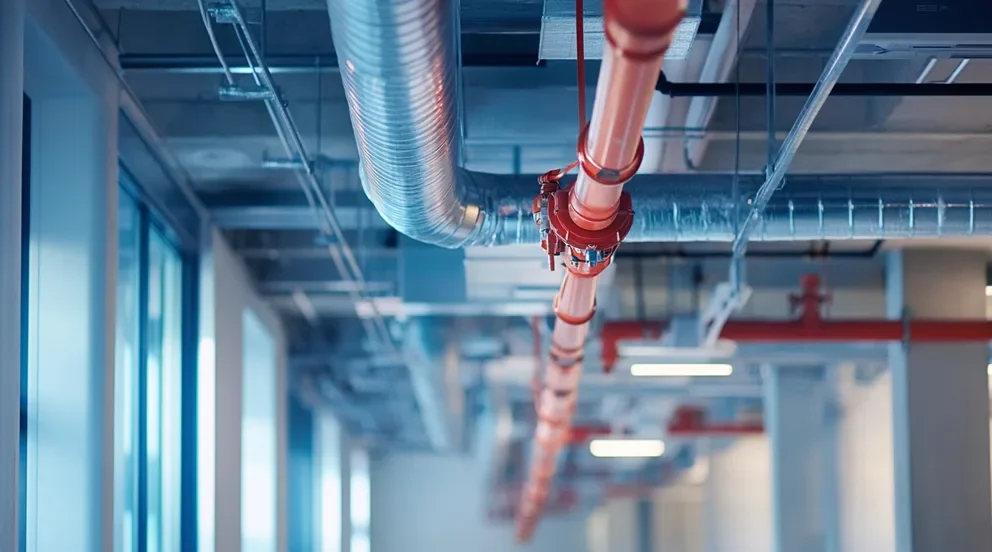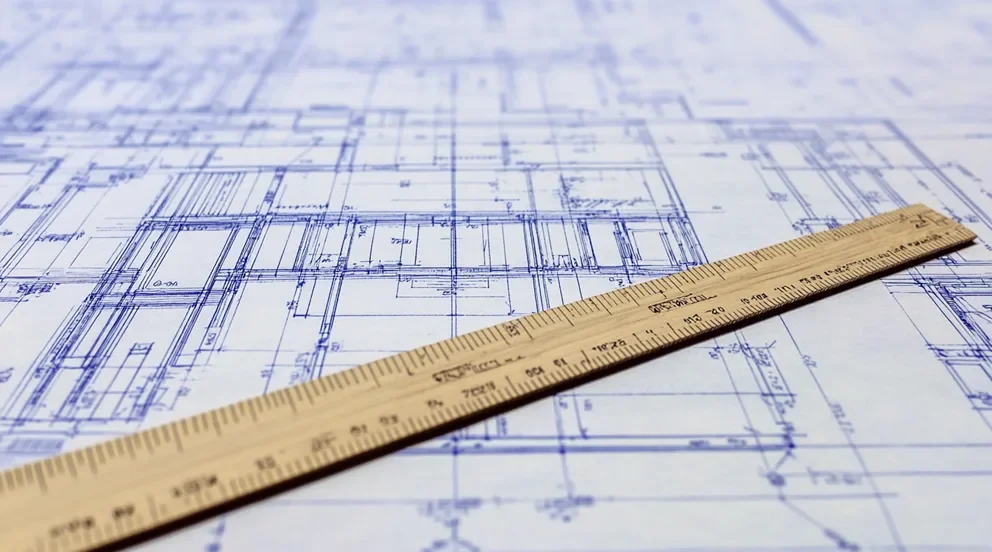The best fire protection strategy involves a multi-faceted approach. Fire prevention is the first and foremost step to ensure safety. This includes inspecting the area for potential fire hazards on a regular basis, making sure exits are accessible, removing combustible items, properly storing combustible items, and having ample fire extinguishers available.
Fire detection should also be utilized. This includes installing smoke and heat detectors throughout the area, having a fire alarm system in place and regularly tested, and thoroughly understanding evacuation plans for all occupants of the building.
Additionally, it is important to ensure a speedy response to any fire situation. This means having a plan and supplies in place such as fire extinguishers, fire blankets, and fire hoses connected to a reliable water supply. Everyone should be aware of the preferred fire extinguishing agents, how to use them, and the evacuation plan if necessary.
When constructing a building, fire protection should be at the forefront of the plans. Many measures can be taken, such as using fire-resistant building materials, creating fire walls, installing sprinkler systems, and fireproof coatings.
Finally, even though preventive measures and detection systems are in place, it is important to undergo regular fire prevention training to ensure everyone is aware of fire safety protocol.
In conclusion, the best fire protection strategy should involve a multi-faceted approach. This includes element of prevention, detection, response, and construction. Regularly training and inspecting the building will help create a safe environment and minimize risks of fire.
What are effective strategies to prevent a fire?
Effective strategies to prevent a fire include inspecting the area for potential fire hazards on a regular basis, making sure exits are accessible, removing combustible items, properly storing combustible items, and having adequate fire extinguishers available. Additionally, it is important to install smoke and heat detectors throughout the area, have a fire alarm system in place and regularly tested, and understand evacuation plans for all occupants of the building.
When constructing a building, fire protection should be taken into account. Measures such as using fire-resistant building materials, creating fire walls, installing sprinkler systems, and fireproof coatings can help reduce the chance of fire.
Regular fire prevention training is also critical to ensure everyone is aware of fire safety protocol. This should include understanding how to use fire extinguishing agents, evacuation plans and understanding the risks of fire.
Overall, fire prevention should include elements of prevention, detection, response, and construction. Regularly inspecting the building and training individuals on proper protocol can help create a safe environment and minimize the chance of fire.
What types of fire extinguishing agents are most effective?
The most effective type of fire extinguishing agents are those rated A, B, and C for the class of fire they are designed to extinguish. Generally, “A” class fires are fueled by common combustibles such as wood, paper, and plastics, while “B” class fires are fueled by flammable liquids like gasoline, oil, and grease and “C” class fires are fueled by electrical equipment.
An “A” class fire can be extinguished with water, foam, ABC dry chemical, or a water-based mist extinguisher. An “ABC” dry chemical extinguisher is recommended as it is a multipurpose fire extinguisher and can also be used on class B and C fires as well.
For a “B” class fire, a as foam, carbon dioxide, BC dry chemical, or Halon extinguishing agents are recommended. Foam and ABC dry chemical extinguishers are multifunctional and can be used on classes A and C fires, while BC dry chemical and Halon extinguishers are designed specifically for class B fires.
Finally, for a “C” class fire the most effective extinguishing agents are carbon dioxide, halon, and ABC dry chemical. A dry chemical extinguisher is the preferred choice as it is designed to work on all three classes of fires.
Overall, the best fire protection strategy involves a multi-faceted approach of prevention, detection, response, and construction. The best type of fire extinguishing agents depend on the type of fire and should be used only after the fire safety training has been undertaken.
What fire safety protocol should be followed in the event of a fire?
In the event of a fire, it is important to follow proper fire safety protocol to ensure safety and minimize damage. The first step is to alert other occupants of the building and evacuate immediately if needed. Once everyone has been safely evacuated, call 911 and wait outside for help to arrive.
Next, only trained personnel should attempt to use a fire extinguisher after evaluating the situation carefully. It is important not to put oneself in danger by trying to fight the fire unless there are no other options available. Never attempt to reenter a burning building until it has been cleared by emergency services personnel.
Finally, make sure that all electrical equipment and appliances have been turned off before leaving the scene and document any damages or losses incurred.
Overall, the best fire safety protocol in the event of a fire is to evacuate immediately and call 911. Only trained personnel should attempt to use a fire extinguisher after assessing the situation carefully and no one should reenter a burning building until it has been cleared by emergency services personnel. Documenting any damages or losses incurred is also essential for insurance purposes. Following these steps will help ensure everyone’s safety during an emergency.
How can the use of fire-resistant building materials help protect a building from fire?
Fire-resistant building materials can help protect a building from fire by reducing the spread of flames and smoke, as well as increasing evacuation time. Fire-resistant materials like concrete, brick, gypsum board, stone, steel, and aluminum will not catch fire or melt when exposed to heat and flame. As a result, these materials can provide extra protection in the event of a fire.
Additionally, using fire-resistant insulation between floors and walls can reduce the amount of hot air travelling through the building which can help slow down the spread of flames. Installing fire walls throughout the structure is also an effective way to prevent fires from spreading quickly.
Overall, using fire-resistant building materials is an important component for fire protection. These materials can help slow down the spread of flames and smoke, as well as buy extra time for evacuation. Firewalls should also be installed throughout the building to further protect against potential fires.
What are the benefits of installing a sprinkler system in a building?
Installing a sprinkler system in a building is one of the most effective ways to protect against fires. Sprinkler systems are connected to an alarm system and will activate automatically when they detect heat or smoke, releasing water over the affected area which can help prevent further damage.
The primary benefit of installing a sprinkler system is that it often eliminates the need to evacuate the entire building if a small fire occurs. This can be especially helpful in large buildings or complexes where evacuation may not be feasible due to size or other factors. Additionally, having a sprinkler system installed can reduce insurance costs as insurance companies view this as an extra precautionary measure for preventing potential damage from fires.
Overall, installing a sprinkler system in a building is one of the best fire protection strategies as it can help protect against potential fires and reduce insurance costs. It also eliminates the need to evacuate the entire building if a small fire occurs, making it a beneficial addition to any building.
What are the recommended evacuation procedures for occupants of a building during a fire?
In the event of a fire, it is important to evacuate the building immediately and in an orderly manner. The first step is to alert other occupants of the danger and stay calm. Next, move away from any areas that are affected by smoke or heat and identify designated exits.
It is also important to remain low to the ground as much as possible since smoke rises and can be harmful if inhaled. Once outside, never attempt to reenter a burning building until it has been cleared by the emergency services personnel. Additionally, try to help anyone who may be in need of assistance during evacuation.
Finally, document any damages or losses incurred once safely outside and make sure electrical equipment and appliances have been turned off before leaving the scene.
Overall, the best evacuation procedures involve staying calm and alerting other occupants of the danger. Always remain low to the ground as much as possible when escaping, help anyone in need of assistance, and never reenter a burning building until it has been cleared by the emergency services personnel. Documenting any damages or losses incurred is also essential for insurance purposes. Following these steps will ensure everyone’s safety during an emergency.
What type of fire protection training are recommended?
Fire protection training are essential for teaching individuals how to react and respond in the event of an emergency. It is important that all occupants of a building be trained on proper fire safety protocol including evacuation procedures, how to use a fire extinguisher and basic first aid techniques.
Training should also cover the importance of using fire-resistant building materials as well as the benefits of installing a sprinkler system. Additionally, it is important to inform people about what to do if they become trapped in a burning building or detect smoke coming from another area.
Overall, all occupants of a building should receive fire safety training which includes topics such as proper evacuation procedures, using a fire extinguisher, basic first aid techniques, the importance of fire-resistant building materials, and the benefits of installing a sprinkler system. Informing people about what to do if they become trapped or detect smoke from another area is also essential for ensuring everyone’s safety during an emergency.



